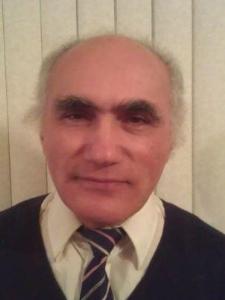
Grigori S. answered • 08/04/13
Certified Physics and Math Teacher G.S.
Let's Lf(t) be the Laplace transform of cos at (this is like cos-Furie trabsform of the fucntion e -st).
Lf(t) = ∫0,∞ cos at e -stdt (1)
If you integrate twice in parts, the same integral (1) will come out again. You can make sure that this integral satsfies to the equation
Lf(t)= (1/s) - (a2/s2) Lf(t) (2)
Solve the eqautio for Lf(t), and you will see that
Lf(t) = s/(s2 + a2)
If you will have problems with integration, let me know.





Hassan H.
Just a minor side note to what Grigori S. has contributed---his equation (2) above is not the only possible form of the algebraic relation you get, depending on your choice of which function to integrate, and which to differentiate, in your integrations-by-parts.
Regards,
Hassan H.
08/04/13